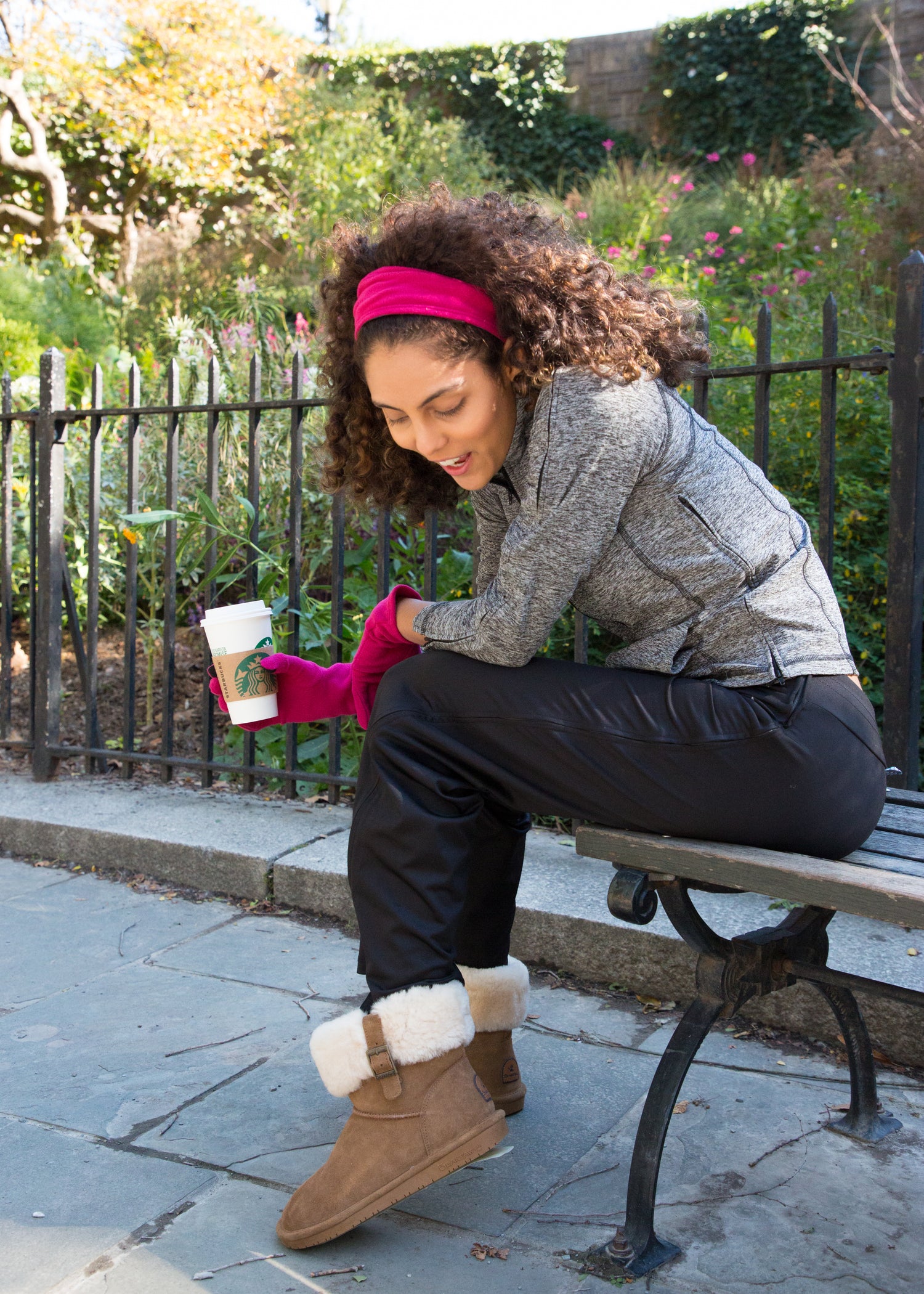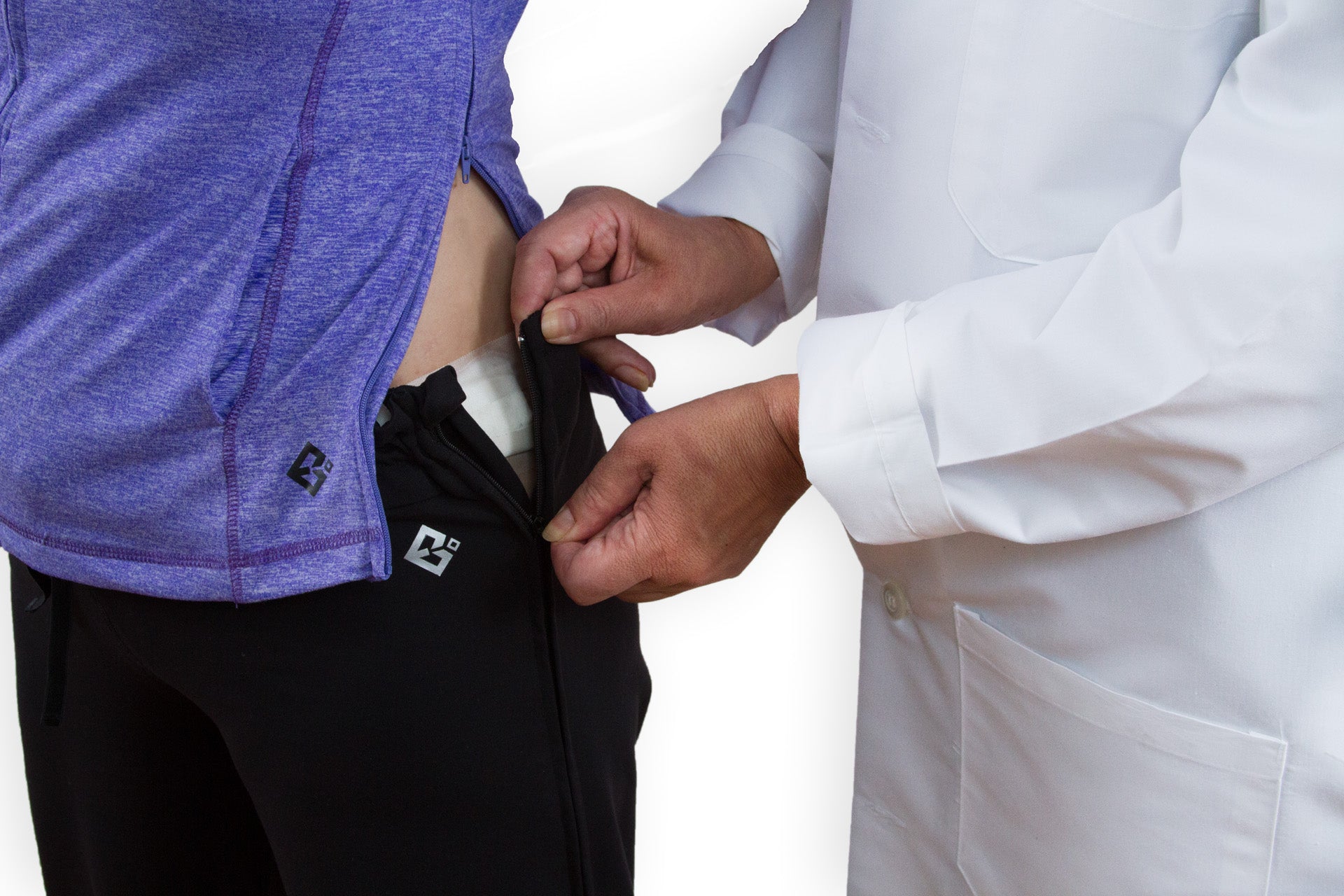Reboundwear is fashion meets function. Launched in 2014, we have been helping men, women, and children look and feel their best in our comfortable, fashionable adaptive wear. We celebrate fellow companies and designers as well as journalists like Noël Duan for their attention to this overlooked market.
Like the designers at Open Style Labs, Reboundwear's designer Bimla Picot was incubated at Rebecca Minkoff's office as part of her experience with Project Entrepreneur this past summer.
Mrs. Picot was inspired to create her line when she experienced first hand how the simple daily task of dress was so arduous for her own friends and family with limited mobility. We are inspired at Reboundwear everyday where we hear how our clothes have made life easier for our customers.
Thank you again Noël for highlighting this important aspect of fashion.
DESIGNING FOR DISABILITIES: HOW PARSONS'S OPEN STYLE LAB IS HELPING TO MAKE FASHION ACCESSIBLE
By Noël Duan
Emily Ladau is what many 26-year-old women living in New York City aspire to be like: She's acutely attuned to the ebb and flow of fashion trends, she's a social media influencer who's been featured in the New York Times and is booked for speaking engagements regularly. Plus, she hosts her own podcast, the side hustle of choice for today's trendiest millennials.
But Ladau does it all in a wheelchair. She was born with Larsen syndrome, a joint and muscle disorder that, amongst various impediments, prevents her elbows from extending fully so that she struggles to pull on a t-shirt and has to do a "shimmy shake" ("one butt cheek at a time," she describes) in order to put on buttonless pants. This fall, she is participating as a model in Parsons's Open Style Lab (OSL), a unique nonprofit organization incubated in the famous fashion school that's dedicated to developing clothing for people of all abilities.
Clothing made for people with disabilities, both physical and mental, is called "adaptive wear" in the industry, and the best designs — in terms of both function and style — involve collaborations between fashion designers, occupational therapists, engineers and the clients-slash-models themselves. There are 59 million people in the United States living with disabilities, and their clothing options are greatly limited.
Every summer, the OSL hosts a 10-week research program that brings together these diversely skilled individuals to learn, collaborate and create bespoke clothing for four or five clients with disabilities. This year, the teams collaborated with four clients with spinal-cord injuries and wheelchair disabilities, focusing on the wearable experience of the individual.
"We see [clothing] as an opportunity for greater accessibility and independence for quality of life," Grace Jun, the executive director of OSL and assistant professor at Parsons, explains. "But we also see a barrier to your independence if it takes you 30 minutes to put on a garment that has difficult closures because you have paralysis or limited dexterity in your fingers. Is it really your fault — or is it your clothing that needs to be redesigned?"
Photo: Open Style Lab
One common problem for wheelchair users, as noted by Jun and confirmed by Ladau, is finding appropriate and stylish raingear that won't get stuck in the wheels. "I wouldn't be caught dead in a poncho," Ladau says.
It's not just a matter of inconvenience — something getting stuck in a wheelchair can lead to accidents, like getting flung onto the ground. In addition to water resistibility, other major concerns for adaptive clothing include breathability and elasticity to prevent pressure sores on the body; tight denim pants, for example, can dig into the skin of a wheelchair user who is sitting for hours at a time. OSL is lucky enough to work with sponsors like Woolmark and Polartec because they make performance fabrics that are odor- and water-resistant. Unfortunately, the solution is not as simple as finding the most durable textiles.
"It's not a matter of material; it's a matter of proportioning that material onto a certain place so that it doesn't rip with the pressure points," Jun explains.
The program isn't meant to be one-way taught course either, according to Jun. "I usually ask the clients to set the tone of vocabulary that they wish to be used," she says. "Whether they call themselves a 'wheeler,' someone who has a disability, or someone who doesn't want to be called any of those things."
The program participants, called fellows, visit the clients' homes and shadow them in their daily lives for the entirety of the program. This summer's clients were Chris O'Donoghue (a former TV reporter), Quemuel Arroyo (a policy officer at the New York City Department of Transportation), Marci Travin (a former sales executive at Hearst) and April Coughlin (an activist with a PhD in Special Education, focusing on Disability Studies). "[Coughlin's team] followed her to Amtrak and got lost because she was too fast," Jun recalls. Some clients come in with sketches of their own already prepared; Travin, for example, knew she wanted a jumpsuit, and the final garment produced was a lace jumpsuit that she could wear to parties.
OSL's clients aren't just in search of one-of-a-kind or special event apparel, however. In fact, many people with disabilities are in dire need of professional clothing or work wear. As of August 2017, 20.5 percent of the American workforce over the age of 16 is disabled, and a lot of professional clothing, such as starched Oxford shirts with tiny buttons, isn't accessible for disabled workers.
"A lot of accessibility clothing is not just for a fashion statement or for functionality, but for better employment," Jun explains. "There are certain dress codes that are unspoken about in work wear."
One of OSL's advisors, Maura Horton, founded MagnaReady — a brand that specializes in magnetically infused Oxford shirts for both men and women — in April 2013 after her late-husband, a college football coach, was diagnosed with Parkinson's Disease and was unable to button his shirt after a game. He was a frequent traveler who made public appearances with his team and needed to wear a button-up shirt without the dexterous complications of buttons; but at the time, there were only Velcro shirts on the market.
"We wanted him to look like every other man out there functioning in society and doing what he has always done," she says.
Photo: Open Style Lab
The shirts are also wrinkle- and stain-resistant, which isn't just something universally desired as a feature, but also especially important to people with limited mobility. Currently, Horton's shirts are available online and in department stores like Kohl's and JCPenney under the nomenclature MagnaClick, where they're advertised for folks who simply just don't want the hassle of buttoning up. While many disabled people find e-commerce to be easier for shopping for clothes, other individuals — like Ladau, who drives a car — prefer trying on in person. "I absolutely need to know if the clothes fit me and if I can put them on by myself," she says.
Ladau's friend and OSL mentor, Lucy Jones, who won the 2015 Parsons graduate prize for fashion design for her collection designed for wheelchair users, believes that technology will be the answer to problems of scaling that are currently preventing adaptive fashion from being as mainstream as sustainable fashion.
"Even without disability, body types vary drastically," Jones notes. "Instead of producing more, the future looks like customization on demand." Currently, it is impossible for a single mass-produced piece of clothing to address the entire spectrum of mental and physical abilities unless there is a large-scale manufacturer with the technology and resources to invest for the long-term.
"You can't assume that everyone can afford a $600 dress," Ladau says. "At the same time, you shouldn't assume that someone with a disability can't afford that, either. It's about having choices."
Jones points out that famously conscious brand Eileen Fisher, where she used to work, makes some adaptive clothing simply because there are expandable waistbands, for example. This August, Target launched a kids' collection that is sensory-sensitive, with tags and zippers designed specifically for kids with autism or other sensory processing sensitivities. And in 2016, Tommy Hilfiger collaborated with nonprofit Runway of Dreams to create an adaptive collection for kids, with hidden magnetic fasteners.
"I know the impact clothing can have on someone's self-worth firsthand — my son Oliver was born with a rare form of muscular dystrophy and he inspired my journey as an advocate for adaptive fashion," Runway of Dreamsfounder Mindy Scheier says. "I developed key adaptive modifications and worked hard to mainstream this movement so that my son and millions of others facing similar dressing challenges would finally be recognized."
This past summer, the nonprofit raised over $1 million at its gala to support a variety of initiatives, from donating adaptive clothing to children to consulting with fashion brands (like Tommy Hilfiger) on making clothing more accessible.
At the Runway of Dreams gala. Photo: Runway of Dreams
"I think it is so important for the fashion industry to include the disabled community," model, disability activist and Runway of Dreams ambassador Rebekah Marine says. "With such a large platform, the fashion industry has this rare opportunity to open a discussion that once was so taboo. People living with disabilities should no longer feel as though they need to hide it or be ashamed of it." The 5'2 model was born without a right forearm (she currently uses an i-limb quantum prosthetic manufactured by Touch Bionics) and has walked in several seasons of New York Fashion Week.
Both Jones and Horton were selected by Paola Antonelli, senior curator of architecture and design and director of research and development at the Museum of Modern Art, to be featured in "Items: Is Fashion Modern?," an upcoming exhibit exploring the past, present and future of fashion, opening Oct. 1, 2017. (Jones is showing a pair of tights, and Horton a magnetic Oxford shirt.)
"I've always been interested in objects designed for special needs that become icons of design for all," Antonelli explains. "The kitchen tools brand Oxo is an example. The founder, Sam Farber, designed the first easy-grip handle to help his wife, who had a problem with her wrists. It was so comfortable for everyone, it became a successful product, and then a product line. MagnaReady could have the same destiny." But Antonelli argues that objects don't have to be practical or pragmatic to be deemed functional: "A fashion object's function could be to make the wearer feel beautiful and unique — comfort be damned."
Ladau, an anti-Velcro fashion enthusiast, agrees. "I'm stubborn," she says, hoping that OSL this semester will help her design the power suit of her dreams. "Right now, I feel that most adaptive clothing looks like adaptive clothing. I want something beautiful, too."





Leave a comment
All comments are moderated before being published.
This site is protected by hCaptcha and the hCaptcha Privacy Policy and Terms of Service apply.